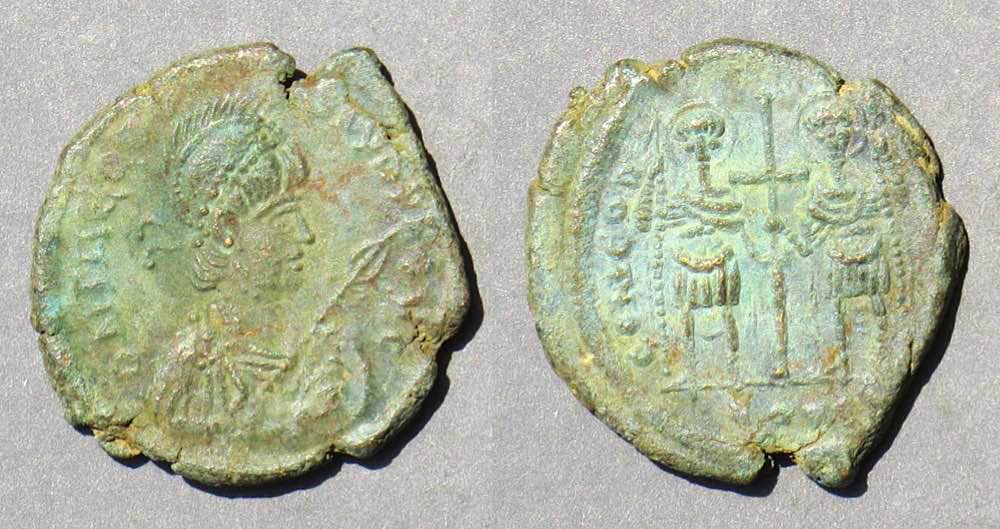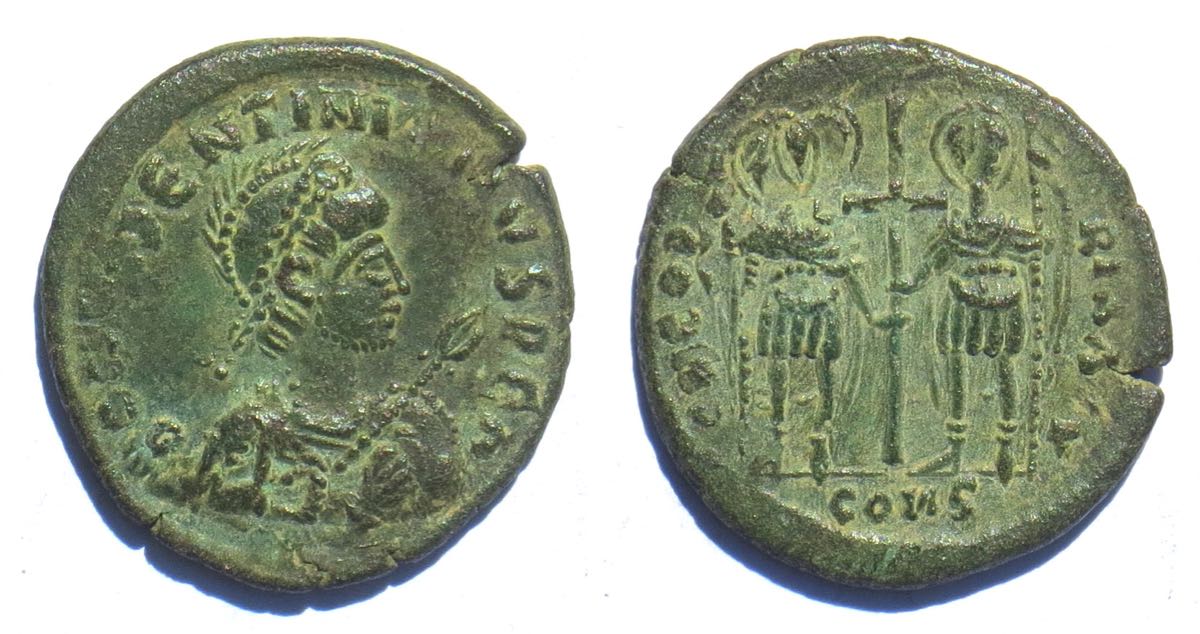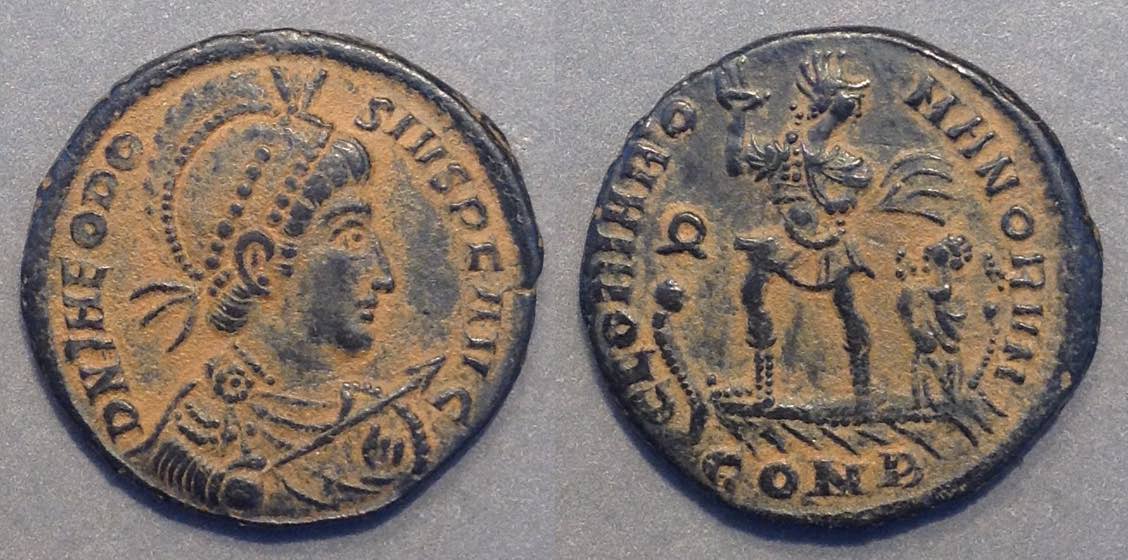
Theodosius II (402-459) and Valentinian III (425-455): [AE2's]
Images.
| ES1 21 |
AE2 helmeted bust right DN THEO... |
two emps stg on either side of long cross CONCORDIA AGV [sic] |
A-- | Sear V 21184 So-- |
RIC X 460 "R3" "? 437" Con |
Hahn 71 pl. 4 Con |
DO LRC 435 Con |
NC 1995 p. 271-5 |
| ES2 21 |
the same but DN VAL... |
same | A-- | Sear V 21302 So-- |
RIC X 461 "R4" Con |
Hahn -- | DO LRC -- |
NC 1995 p. 271-5 pl. 48: 2-3 |
Note for collectors: The examples below of Theodosius II and Valentinian III are much better than most. When RIC X was published in 1994 scholars in western Europe knew very little about these types which are from behind the Iron Curtain. The RIC rarities "R3" and "R4" mean only a few examples were known to Kent. Now the number of known examples has exploded, but both types are still rare in conditions as good as these.
Theodosius II is regarded as the senior emperor. His obverse legend is broken, allowing for a larger head, and the legend is Valentinian III is not broken. Valentinian III's pieces are rarer, which is not surprising this far east because he was the western ruler.
Observations. These and the Leo pieces have a mintmark of Constantinople in exergue: CON or CONE. NC 1995 suggests (but does not assert) it should be believed. Trivero, et. al. wrote, "It is possible that the Crimean market regarded the legend CONE/S as a weight guarantee for the coin, as well as the exergue CONOB on the solidi. We must even consider that in the mint of Constantinople in the V century there wasn’t a fifth officina and, therefore, the exergue CONE raises more doubts." They reject the idea of Choref that this is an issue of the Goths, but do write, "the misunderstanding of the Latin language and the letters in the legends seems to exclude an official imperial issue." [p. 18] However, even the main mints struck many coins with misspellings and poor workmanship, so that is not a strong reason to suppose these coins of Theodosius II and Valentinian III are not official.
Trivero, et. al. note that Korzhenko studied hoards and single finds from Crimea and found that in the late fourth century almost all coins were AE2s (758 out of 771, 98.3%) and only 9 were from before Gratian [p. 6]. Clearly these two new types were revivals of the AE2s in circulation. "The average weights of this issue appears aligned with that of the AE2 of the former Theodosian era." [p. 18] The prototype helmeted obverse is well-known and common (illustrated below).
Theodosius II:

Theodosius II
Type ES1
21-20 mm. 6:30. #.94 grams.
Remarkably nice reverse legend which is almost legible.

Theodosius II
Type ES1
23-22 mm. 6:00. 5.93 grams.

Valentinian III
Type ES2
22-21 mm. 6:30. 4.72 grams.
Reference: "The large bronze of Valentinian III," by A. Korshenko, I. Gorshkov and A.J. Holmes, in NC 1995, 271-275 and plate 48, 2&3.
Obverse prototype:
 Theodosius I, 379-395
Theodosius I, 379-395
AE2.
DN THEO-DOSIVS PF AVG
Bust right, helmeted, draped and cuirassed, holding spear forward and shield.
GLORIA ROMANORVM
Emperor standing left on galley with his right hand raised and helmeted head left. The galley is steered by Victory.
This example: 23 mm. 5.43 grams.
RIC IX Constantinople 52c3
Reference:
"The Chersonese Copper Coinage between Roman and Byzantine Empire" by A. Trivero R., A. Gennari, A. Ortu, M. Cecchinato, and V. Zarkho. It is available from Academia.edu here:
https://www.academia.edu/34901540/The_Chersonese_copper_Coinage_between_Roman_and_Byzantine_Empire_by_A_Trivero_R_A_Gennari_A_Ortu_M_Cecchinato_V_Zarkho
It considers coins from Cherson through the time of Justinian.
Continue with images of Leo I and Verina.
Return to the main page on Byzantine coins of Cherson.